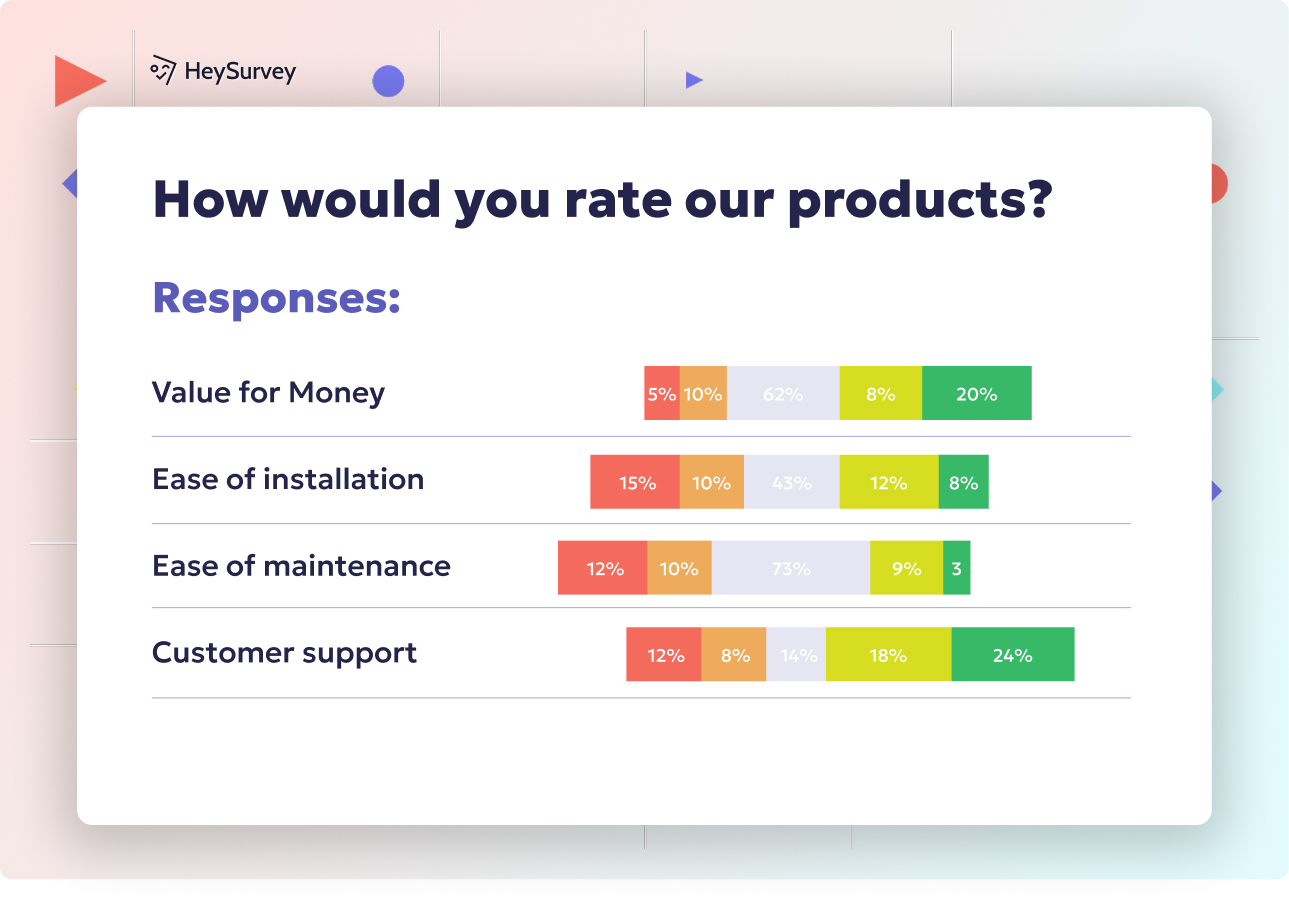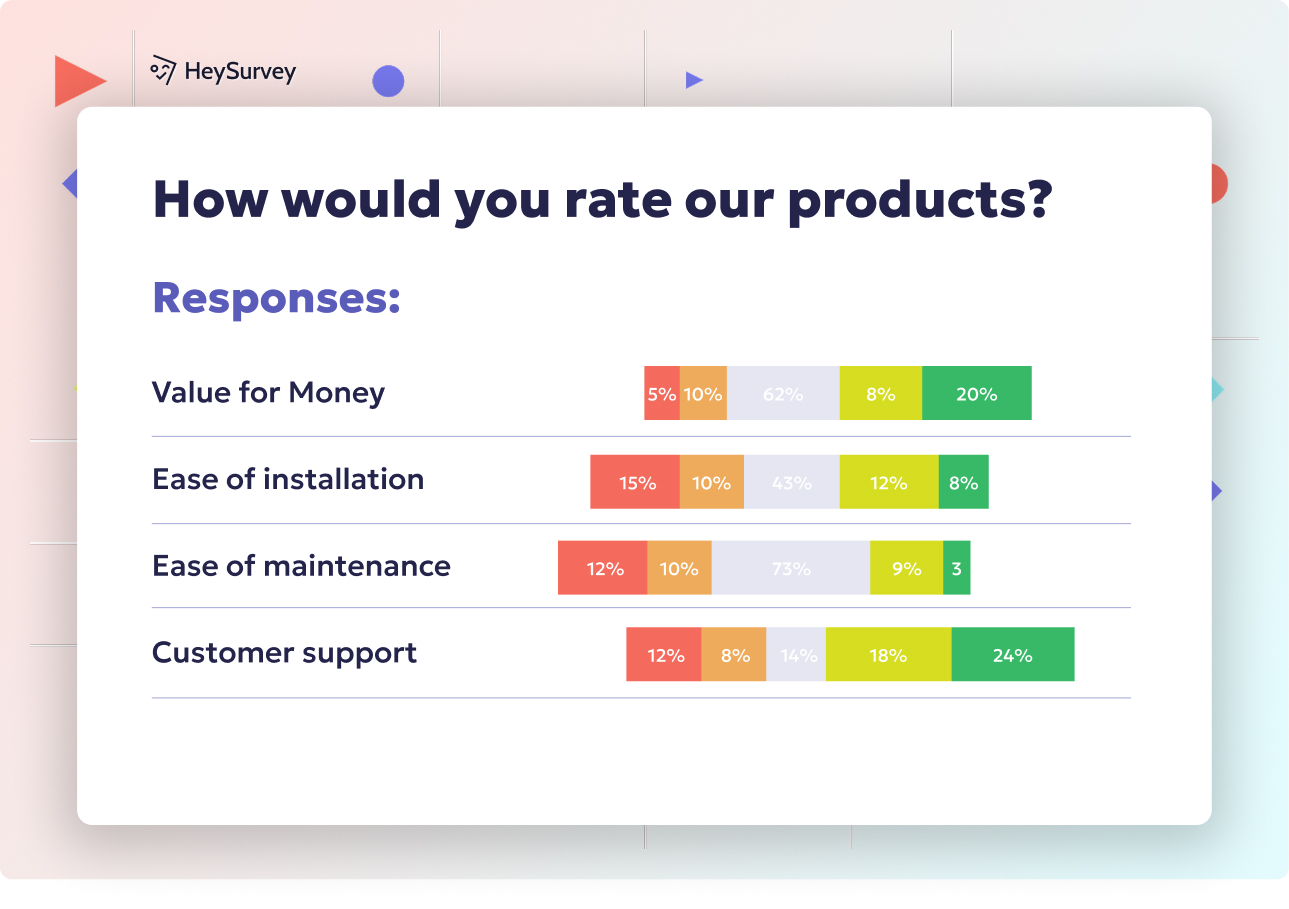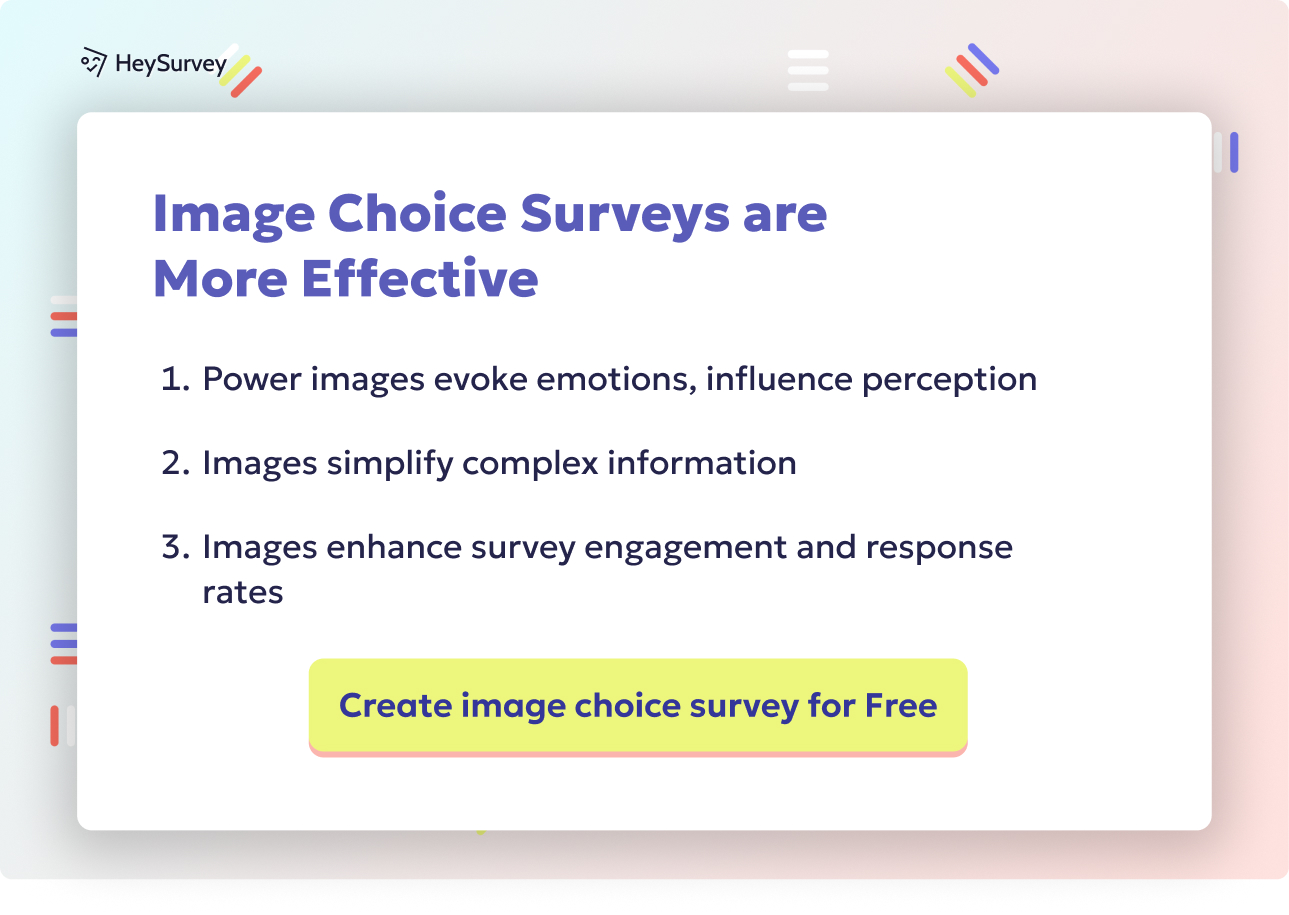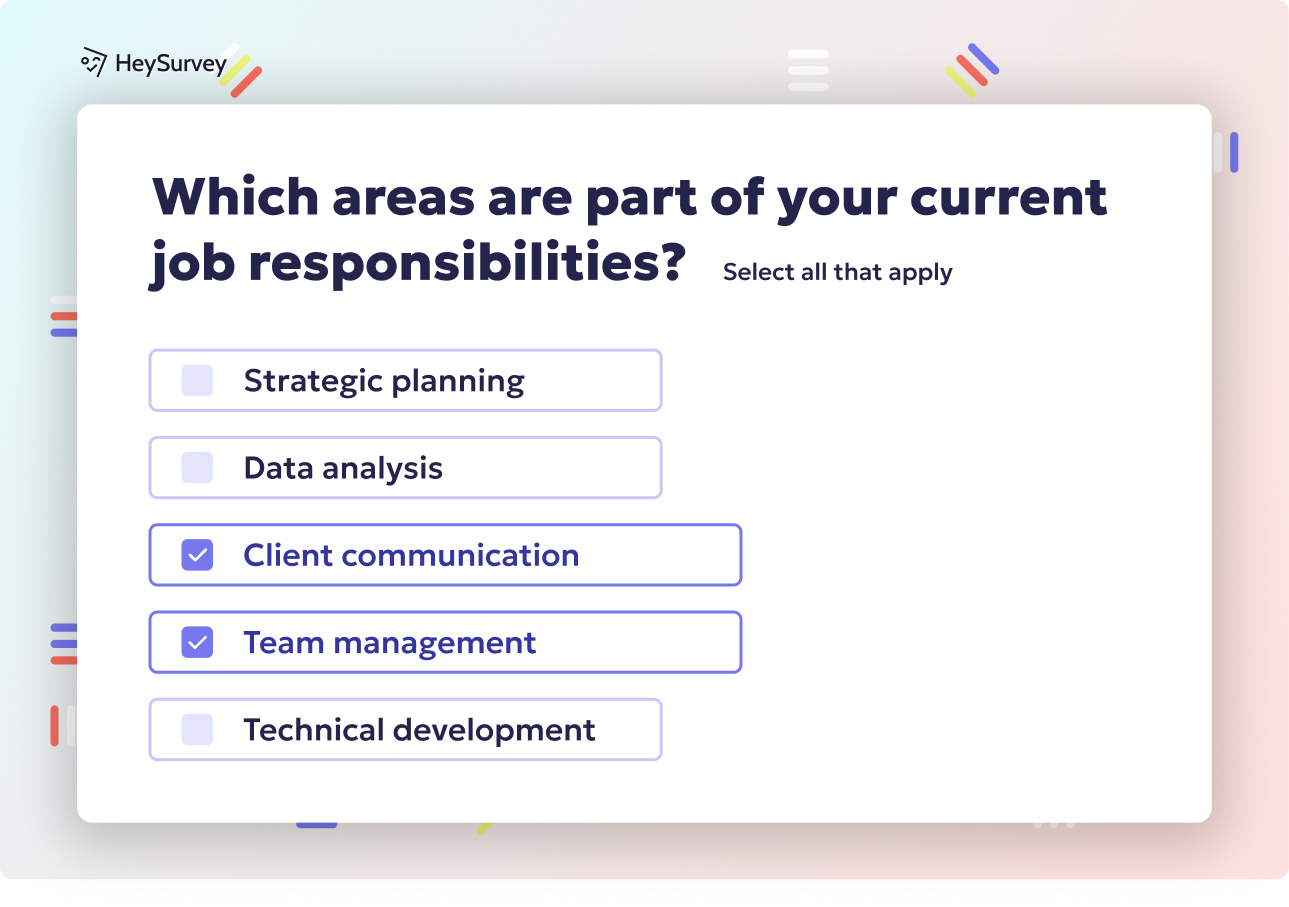30 Student Perception Survey Questions for Better Learning Feedback
Explore 30 insightful student perception survey questions covering course content, teaching, environment, assessments, support, and wellness.
Student perception surveys open a window into the learner's world, offering real insights into what’s working and what needs a major tune-up. These surveys capture student feedback, amplify the learner voice, and ultimately shape a richer academic experience for everyone. Whether it’s a mid-term check-in or an all-out end-of-year pulse, they’re your secret weapon for quality assurance, instructional improvement, and student retention. This article explores the main survey types, when to deploy them, and how every question counts toward building a better educational landscape—one student response at a time.
Course Content & Curriculum Perception Surveys
Understanding Course Content Surveys
Course content and curriculum perception surveys are a prime way to see if your curriculum is really resonating—or just collecting dust. Students are the ultimate critics when it comes to how useful, timely, and challenging course materials are. With curriculum feedback, institutions can easily gauge if coursework moves at the right pace and if the material stays relevant to evolving academic or career goals. These surveys dive into textbook value, class structure, and the alignment of weekly topics with student ambitions.
Why & When to Use
Deploying a course design survey makes sense during important milestones, such as:
- Rolling out a new course pilot
- Overhauling existing curriculum during redesign cycles
- Gathering data for accreditation reports or program reviews
Course content surveys are also useful when you want unfiltered, honest takes from students on what’s landing—and what’s totally missing the mark. These assessments track whether readings or digital materials boost learning and flag units that feel outdated or irrelevant.
What to Ask
Here are five must-ask questions for curriculum feedback:
- How relevant were the weekly topics to your academic or career goals?
- Did the course workload match the credit hours assigned?
- Which units felt outdated or redundant?
- How effectively did readings/tutorials prepare you for assessments?
- What additional topics would you add to strengthen the syllabus?
Curriculum feedback isn’t just for the archives. Results should spark meaningful updates and foster ongoing dialogue between students and faculty, creating a dynamic, responsive curriculum.
The Distance Education Learning Environments Survey (DELES) assesses students' perceptions of distance education environments across six scales, including Instructor Support and Student Interaction. (en.wikipedia.org)

Creating a survey with HeySurvey is as easy as 1-2-3 (plus a few bonus steps to make it shine). Here’s how you can get your student perception survey off the ground quickly, even if you’re brand new to the platform.
Step 1: Create a New Survey
- Log in to HeySurvey or start without an account for a quick look-around.
- Click “Create New Survey” on your dashboard (or hit the button below to open a ready-made template).
- Choose whether to start from scratch (Empty Sheet), pick a pre-built template, or type questions directly for auto-formatting.
- Give your survey an internal name to keep things organized behind the scenes.
Step 2: Add Questions
- Use the Add Question button to drop in your survey items—select from Text, Choice, Scale, or other types.
- Input your questions and tweak settings like required fields, answer options, or scale ranges depending on the survey’s goal.
- Feel free to insert images or descriptions to make questions clearer or more engaging.
- Organize questions by dragging them around or duplicate ones to speed up creation.
Step 3: Publish Your Survey
- When you’re happy with how it looks, hit Preview for a test-run to see it exactly as your students will.
- If all looks good, click Publish to activate your survey.
- Copy the shareable link to send directly to your respondents or embed the survey on a webpage.
- Note: Publishing requires an account so you can collect and analyze responses later.
Bonus Step: Apply Branding
- Open the Designer Sidebar to customize colors, fonts, backgrounds, and question card styles.
- Upload your institution’s logo to give the survey a professional, branded feel.
- Add animations or adjust layout settings (such as one question per page) for a smooth user experience.
Bonus Step: Define Survey Settings
- Access the Settings Panel to set start/end dates or limit the number of responses.
- Configure a redirect URL to send participants somewhere special after completion.
- Decide if respondents can view aggregated results for transparency where appropriate.
Bonus Step: Skip Into Branches
- Use HeySurvey’s branching feature to customize survey flow based on how students answer.
- Set specific questions or endings to appear only for certain responses, making your survey more relevant and engaging.
Ready to get started? Click the button below to open a student perception survey template and tweak it in just minutes!
Teaching Effectiveness Perception Surveys
Pinpointing Instructor Impact
Nothing can make or break a learning experience like the person at the front of the room—or behind the Zoom screen. Teaching effectiveness perception surveys capture the heart of the instructor-student dynamic, zeroing in on instructor clarity, enthusiasm, and responsiveness. By collecting instructor evaluation insights, schools can celebrate what’s working and troubleshoot sticky points in real time.
Why & When to Use
Properly harnessed, teaching quality surveys drive everything from:
- Faculty performance reviews and annual goal setting
- Professional-development and coaching strategies
- Evidence collection for promotion, tenure, or contract renewal
Well-timed surveys keep improvement cycles grounded in real student experiences, not just administrative checklists. When students feel empowered to give honest, actionable feedback, instructors can refine their craft and experiment with new engagement methods.
What to Ask
Below are five clear, concise questions for digging into teaching quality:
- The instructor explained complex ideas clearly. (Strongly disagree → strongly agree)
- How often did the instructor provide real-world examples?
- Rate the instructor’s responsiveness to questions outside class.
- Which teaching strategy (lecture, discussion, group work) helped you learn best?
- What one suggestion would most improve the instructor’s effectiveness?
Instructor evaluation surveys serve as a compass, helping talented faculty steer their ship toward better student outcomes and stronger classroom communities.
The Assessing Student Perspective of Engagement in Class Tool (ASPECT) survey identifies three key factors influencing student engagement: value of activity, personal effort, and instructor contribution. (lifescied.org)
Classroom Environment & Climate Perception Surveys
Evaluating the Learning Landscape
Classroom environment and climate perception surveys take the temperature of the spaces where learning happens—both in person and online. With learning environment survey tools, you’re measuring everything from basic comfort to the all-important sense of belonging. These surveys unpack how inclusivity, technology, and peer dynamics shape every class.
Why & When to Use
It’s wise to roll out classroom climate surveys during these pivotal moments:
- The start of hybrid or online courses
- Launching school-wide DEI (Diversity, Equity, and Inclusion) initiatives
- Planning for facility improvements or accessibility upgrades
These tools help spotlight barriers and reveal what keeps students feeling safe, supported, and motivated.
Students may notice and report:
- Unreliable technology stalls participation
- Awkward seating stifles collaboration
- Heated debates go unchecked, discouraging marginalized voices
What to Ask
Here are five powerhouse questions for your next learning environment survey:
- I felt respected by peers during class discussions.
- How accessible was classroom technology (Wi-Fi, projectors, LMS)?
- The seating/room layout supported collaborative learning.
- Did you feel safe expressing differing opinions?
- What improvements would make the environment more inclusive?
Classroom climate results are magic for surfacing invisible issues, ensuring every learner feels right at home and ready to succeed.
Assessment & Feedback Perception Surveys
Measuring Assessment Fairness
Every student has an opinion about tests. Assessment and feedback perception surveys offer a polite, structured way to gather these hot takes. With a focus on assessment fairness, frequency, and transparency, these surveys review how well exams, assignments, and instructor comments fuel student progress, not panic.
Why & When to Use
Strategically timed, student feedback on grading surveys:
- Follow major exams, projects, or presentations
- Guide grading rubric revisions
- Provide documentation before accreditation audits or program evaluations
By gathering focused opinions about test structure and the clarity of feedback, instructors and assessment designers gain valuable footing for future improvements.
What to Ask
Drill down with these five precise questions on assessment fairness:
- Assessments accurately reflected course objectives.
- Feedback helped me understand how to improve.
- Turnaround time for graded work met my needs.
- Which assessment format (quiz, paper, presentation) was most effective for your learning?
- Describe any grading criteria that seemed unclear.
Student feedback on grading lets you address gaps in fairness and transparency, helping both students and faculty rest easier before test day.
Research indicates that student perception surveys can effectively identify areas for improvement in assessment fairness and feedback quality, leading to enhanced educational outcomes. (arxiv.org)
Support Services & Resources Perception Surveys
Taking the Pulse on Student Support
Academic life’s not all about books and tests—students also rely on a web of support. Support services and resources perception surveys zoom in on satisfaction with tutoring, advising, library access, and tech help. With a well-crafted student support survey, it’s easy to identify strengths or bottlenecks in the safety net that keeps students balanced.
Why & When to Use
Triggered at optimal points, these surveys support:
- Budget planning for resource allocation
- Piloting new support initiatives or platforms
- Intervening early for at-risk students to improve retention rates
Academic resources surveys unearth which services are lifesavers and which are gathering digital dust.
Common scenarios that call for a pulse check include:
- Launch of a revamped tutoring system
- New library database subscriptions
- Campus tech upgrades
What to Ask
Key questions to map out academic resources and support effectiveness:
- Rate the availability of academic advising appointments.
- How helpful were library databases for your coursework?
- Tech support resolved my issue within a reasonable timeframe.
- Which campus resource did you use most this term?
- What additional support would improve your success?
With a strong student support survey, leadership can fine-tune offerings to fit actual need, not just perceptions from a distance.
Social & Emotional Well-Being Perception Surveys
Gauging Student Wellness
Learning thrives when students feel supported, not just challenged. Social and emotional well-being perception surveys explore feelings of belonging, stress levels, and access to mental-health resources. Using these student wellness survey tools, institutions can spot burnout risks early and ensure a caring, connected academic community.
Why & When to Use
The best times to offer a student wellness survey include:
- Recovery periods after significant disruptions (like a pandemic)
- Wellness week events or campus-wide mental-health campaigns
- Setup of early-alert systems to proactively identify students in need
With built-in questions about peer support and institutional resources, these surveys encourage honest reflection on what truly lifts—or weighs down—the academic spirit.
What to Ask
Here are five must-ask questions for a holistic emotional climate check-in:
- I feel a sense of belonging at this institution.
- How often did stress interfere with your studies this term?
- Were mental-health services easy to access?
- Rate the effectiveness of peer-support programs.
- What activities help you manage academic stress?
Tapping into the emotional climate via student voice can lead to more empathetic policies and, ultimately, a stronger learning ecosystem.
Best Practices: Dos and Don’ts for Student Perception Surveys
The Dos: Keys to effective student surveys
Done right, student perception surveys are a gold mine of actionable data. Here’s how to make sure your questions are sharp, your timing is spot on, and your results actually spark change:
- Align every question with a clear objective—don’t waste a single item
- Keep surveys concise and respect students’ time (think ≤10 minutes)
- Guarantee anonymity and privacy for candid feedback
- Always pilot-test survey items before campus-wide launch
- Close the feedback loop: share what you learned, and describe next steps
These best practices not only improve response rates but also contribute to stronger, data-driven course design.
The Don’ts: Survey pitfalls to dodge
While crafting that perfect student survey, sidestep these common errors:
- Avoid leading or double-barreled questions (no “rate the lively and informative lectures” here)
- Don’t ignore mobile optimization—students live on their devices
- Refrain from surveying too frequently, risking survey fatigue
- Never report results without adding crucial context
- Do not overlook demographic segmentation—you might miss important trends
Legal and ethical considerations are also crucial. Always comply with student privacy laws (think FERPA in the U.S., GDPR in Europe), and keep all identifiable data under digital lock and key.
Analyzing for Action
To turn survey data into real improvements, it’s essential to analyze Likert scale responses for trends and cross-tabulate them with demographics. Open-ended questions, meanwhile, allow you to dig for actionable, nuanced feedback—don’t just tally up numbers and call it a day. This dual approach transforms a stack of survey forms into a student-centered strategy for continuous academic growth.
Conclusion & Next Steps
A well-rounded collection of perception surveys offers institutions a true 360-degree view of the student experience. By using a blend of insights from course content, teaching quality, environment, support, and emotional wellness, schools can move from guesswork to targeted action. Start with a survey calendar and make “student voice data” a pillar of your ongoing improvement plans. Analyze results with care, and watch as “learning analytics” lead to better retention, satisfaction, and success for every learner.
Related Student Survey Surveys

31 Survey Questions Examples for Students to Improve Learning
Discover 28 survey questions examples for students across 6 key types to boost engagement, feedba...

29 Class Survey Questions: Proven Templates for Every Stage
Discover 40+ proven class survey questions with detailed templates for every course stage to boos...

30 Survey Questions for Students: 6 Types & When to Use Them
Explore 6 powerful survey types with 30+ sample survey questions for students to boost engagement...

